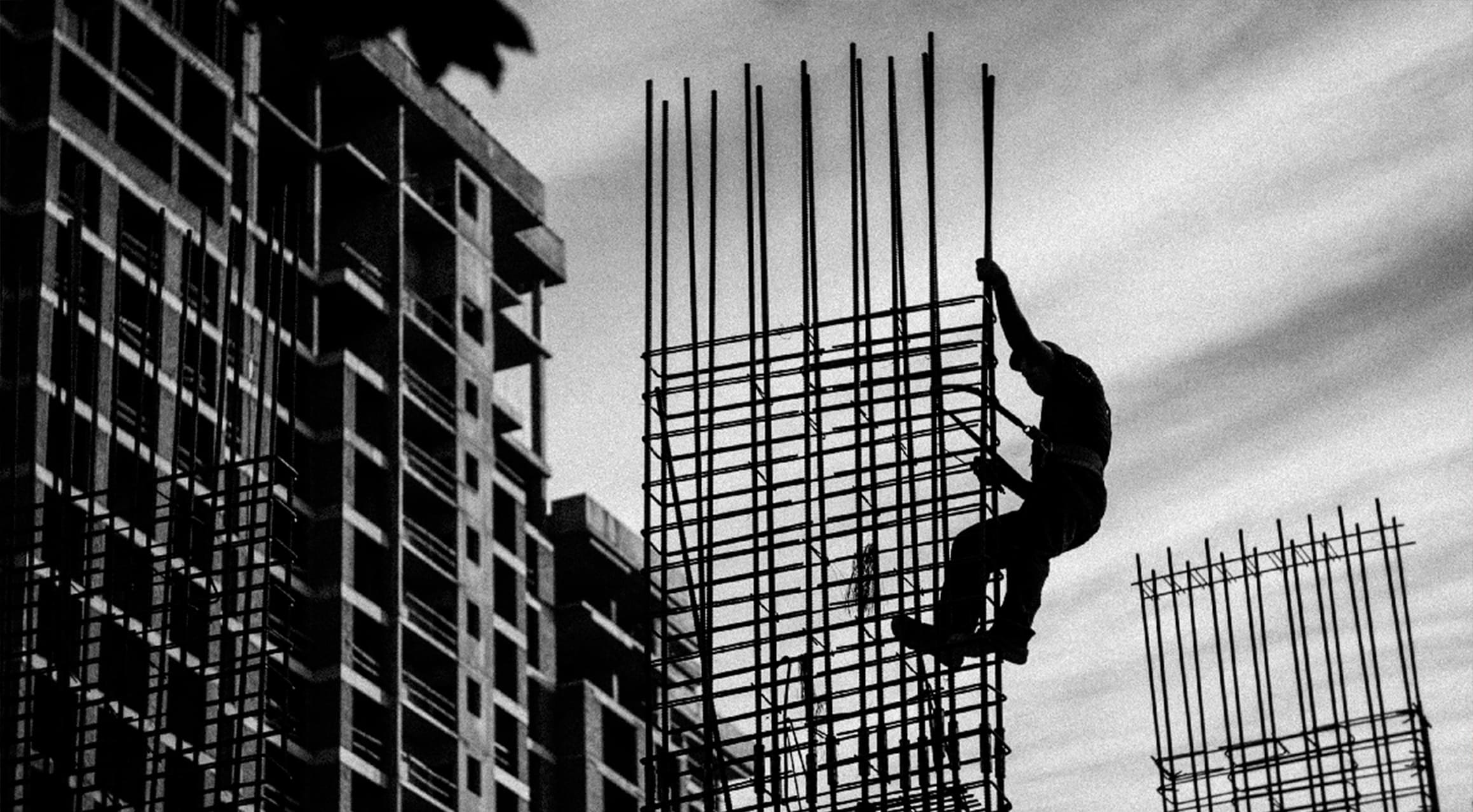Features > Property News & Insights > Market updates
“Significant deficiency” of homes set to continue: Oxford Economics

KEY POINTS
- Oxford Economics predicts Australia will fall 22% short of the National Housing Accord target of building 1.2 million new homes by mid-2029
- While the forecaster believes the building industry will respond to lower interest rates, government housing investments and planning moves, new home building will only ramp up in the last 12 months of the Accord
- Oxford estimates Australia is 146,000 homes short of what the population currently requires, and this will blow out further to a deficit of 164,000 homes by June 2027
Australia will fall more than 260,000 homes short of the nationally agreed target of building 1.2 million new homes by mid-2029, according to a landmark new study.
The “Building in Australia” report says that despite renewed government efforts to boost housing supply, it’s expected to take until the latter half of the decade before the construction sector manages to build homes at a pace that vaguely keeps up with population growth.
Even then, there will still be a shortfall of homes, “entrenching affordability as a chronic issue,” according to leading independent analyst and industry forecaster Oxford Economics Australia.
The details
Oxford’s Building in Australia report estimates the negative effects of high interest rates (the RBA’s cash rate is at its highest level in 12 years) and rising building costs will see total dwelling starts end the 2023-24 financial year at around 155,700, down 10% nationally on the previous year.
To meet the nationally agreed 1.2 million homes over 5 years target by mid-2029, the industry needs to be building homes at an average of 240,000 homes a year.
“Strong population growth will continue to power underlying housing demand,” the report says.
Oxford Economics Australia estimates there was what it calls “a significant dwelling stock deficiency” of 146,000 homes in Australia as of June this year 2024, and it expects this will blow out further to a deficit of 164,000 homes by June 2027.
Industry recovery slow
The building industry will start to respond as interest rates inevitably start to move lower and costs stabilise, but Oxford Economics Australia warns the recovery will be slow.
“While industry capacity is showing signs of improvement in areas, labour shortages remain, that will place a speed limit on the early-to-mid stage of the recovery,” the report says.
As a result, Oxford predicts only “marginal growth” in total dwelling starts this financial year (2024-25) of just 2% to 158,300.
However, report author Timothy Hibbert says it’s not all doom and gloom for the building sector.
Mr Hibbert, Oxford’s Head of Property & Building Forecasting, says national total building construction is set to rise from 2025-26 and hit a record level of activity by the end of the decade.
“While we will continue to experience a dwelling stock deficiency, activity will inevitably recover in the residential sector,” he says.
“All build forms will contribute, driving total dwelling commencements to a new record level by the end of the decade.”
“And a recovery in non-residential (construction) is due from 2026, led by hospital asset renewals and a strong pipeline of data centre builds.”
“All told, from a weakened base, national total building construction is forecast to climb 39% over the four years to FY2029,” Tim Hibbert says.
In some good news for state governments—who have been pushing for more high-density dwellings located in urban areas where there is already substantial infrastructure—Oxford predicts the apartment sector will begin recovering in 2025-26.
Currently, many developers are complaining many large-scale projects are not viable because of high material and labour costs and government red tape.
However, Oxford says this will change “with support from falling interest rates, the upward rebasing of rents, coordinated social housing investment, and planning tweaks in key markets.”
More high-density residential construction will see total dwelling commencements rising to 241,900 dwellings in 2028-29, according to Oxford Economics Australia, a level marginally above the previous record high set in 2016.
However, given residential construction is at such a low point now, Oxford Economics Australia forecasts only 940,000 new homes in total will be completed by the Federal government’s self-imposed deadline of 30th June 2029.
That’s a level 22% below the 1.2 million National Housing Accord target, which the Federal government agreed with the states and territories last year.
The bottom line
While there is some hopeful news in Oxford’s Building in Australia report, the bottom line is that the forecaster finds the entrenched housing shortage we are currently experiencing is here to stay—in the medium term, at least.
The existing “significant dwelling stock deficiency,” which is “entrenching affordability as a chronic issue,” is going to remain a problem for tenants and first home buyers for some time to come, regardless of the level of interest rates.
For owners and investors, however, expect to see more upwards pressure on property prices and rents for the foreseeable future.
Stay Up to Date
with the Latest Australian Property News, Insights & Education.




.png?width=292&height=292&name=Copy%20Link%20(1).png)
 SIGN UP FOR FREE NEWSLETTER
SIGN UP FOR FREE NEWSLETTER





.jpg?width=1920&height=1080&name=Warning%2c%20You%20Might%20Be%20Facing%20Higher%20Taxes%20Soon%20(1).jpg)





.png?width=1920&height=1080&name=Rate%20Drops%20Signal%20BIGGEST%20Property%20Boom%20in%20DECADES%20(1).png)

.jpg?width=1920&height=1080&name=Labor%20vs%20Liberal%20These%20Housing%20Policies%20Could%20Change%20the%20Property%20Market%20Forever%20(1).jpg)
.jpg?width=1920&height=1080&name=QLD%20Slashes%20Stamp%20Duty%20Big%20News%20for%20Investors%20%26%20Home%20Buyers%20(1).jpg)
.jpg?width=1920&height=1080&name=Trump%20Just%20Slapped%20Tariffs%20%E2%80%93%20Here%E2%80%99s%20What%20It%20Means%20for%20Australia%20(1).jpg)
.jpg?width=1920&height=1080&name=Federal%20Budget%202025%20More%20Debt%2c%20No%20Housing%20%E2%80%93%20Here%E2%80%99s%20What%20You%20Need%20to%20Know%20(1).jpg)
.jpg?width=1920&height=1080&name=Australias%20Housing%20Crisis%20is%20about%20to%20get%20MUCH%20Worse%20(New%20Data%20Warns).jpg)
%20(1).jpg?width=1920&height=1080&name=Australias%20RENTAL%20CRISIS%20Hits%20ROCK%20BOTTOM!%20(2025%20Update)%20(1).jpg)
%20(1).png?width=1920&height=1080&name=Is%20Adelaide%20Still%20a%20Good%20Property%20Investment%20(2025%20UPDATE)%20(1).png)
.jpg?width=1920&height=1080&name=RBA%20Shocks%20with%20Rate%20Cuts!%20What%E2%80%99s%20Next%20for%20Property%20Investors%20(1).jpg)
%20(1).jpg?width=1920&height=1080&name=I%20Predict%20The%20Feb%20Rate%20Cut%20(My%20Price%20Growth%20Prediction)%20(1).jpg)
.png?width=1920&height=1080&name=Why%20Property%20Prices%20Will%20Rise%20in%202025%20Market%20Predictions%20(1).png)
.jpg?width=1920&height=1080&name=Why%20Investors%20Are%20Choosing%20Apartments%20Over%20Houses%202%20(1).jpg)
.jpg?width=1920&height=1080&name=Why%20Rate%20Cuts%20Will%20Trigger%20A%20Property%20Boom%20(1).jpg)
.jpg?width=1920&height=1080&name=Retire%20On%202Million%20With%20One%20Property%20(Using%20SMSF).jpg)
.jpg?width=1920&height=1080&name=4%20Reasons%20Why%20You%20Should%20Invest%20in%20Melbourne%20Now%20(1).jpg)
%20(1).jpg?width=1920&height=1080&name=Old%20Property%20vs%20New%20Property%20(Facts%20and%20Figures%20Revealed)%20(1).jpg)
%20(1).jpg?width=1920&height=1080&name=Will%20The%20New%20QLD%20Govt%20Create%20a%20Property%20Boom%20or%20Bust%20(My%20Prediction)%20(1).jpg)
%20Scott%20Kuru%20(1).jpg?width=1920&height=1080&name=Inflation%20Hits%20Three-Year%20Low%20(Will%20RBA%20Cut%20Rates%20Soon)%20Scott%20Kuru%20(1).jpg)
.jpg?width=1920&height=1080&name=How%20to%20Buy%20Investment%20Property%20Through%20SMSF_%20The%20Ultimate%20Guide%20(1).jpg)
.jpg?width=1920&height=1080&name=Victoria%20Slashes%20Stamp%20Duty%20Melbourne%20Set%20to%20Boom%20Scott%20Kuru%20(1).jpg)
.png?width=1571&height=861&name=Are%20Foreign%20Buyers%20Really%20Driving%20Up%20Australian%20Property%20Prices%20(1).png)
.jpg?width=1920&height=1080&name=The%20Single%20Factor%20That%20Predicts%20Property%20Growth%20Regions%20(1).jpg)
%20Scott%20Kuru%20(1).jpg?width=1920&height=1080&name=My%20Prediction%20On%20Rates%20%26%20Negative%20Gearing%20(Market%20Crash)%20Scott%20Kuru%20(1).jpg)

-1.png?width=1920&height=1080&name=Major%20Banks%20Cut%20Rates%20Will%20RBA%20Follow%20Suit%20(Sept%20Rate%20Update)-1.png)
%20Scott%20Kuru-1.png?width=1920&height=1080&name=Rate%20Cut%20Coming%20What%20New%20Zealands%20Move%20Means%20for%20Australia%20(Sept%20Prediction)%20Scott%20Kuru-1.png)
%20(1).jpg?width=1920&height=1080&name=Buy%20when%20the%20interest%20rates%20are%20high!%20(Why%20you%20must%20buy%20now!)%20(1).jpg)
.jpg?width=1920&height=1080&name=Carms_Revised%20Taxes%20Due%20Aug%209%20YT%20Thumbnail02%20(1).jpg)
.jpg?width=1920&height=1080&name=Carms_Too%20Little%20Too%20Late%20Aug%207%20YT%20Thumbnail01%20(1).jpg)









.jpg?width=1920&height=1080&name=Carms_Rate%20Drop%20In%20July%20Jun%2010%20YT%20Thumbnail02%20(1).jpg)
.jpg?width=1920&height=1080&name=Carms_Own%20a%20Property%20V6%20Jun%205_YT%20Thumbnail%20(1).jpg)









.png?width=1920&height=1080&name=Artboard%201%20(3).png)






.jpg?width=1920&height=1080&name=YT%20thumbnail%20%20(1).jpg)

